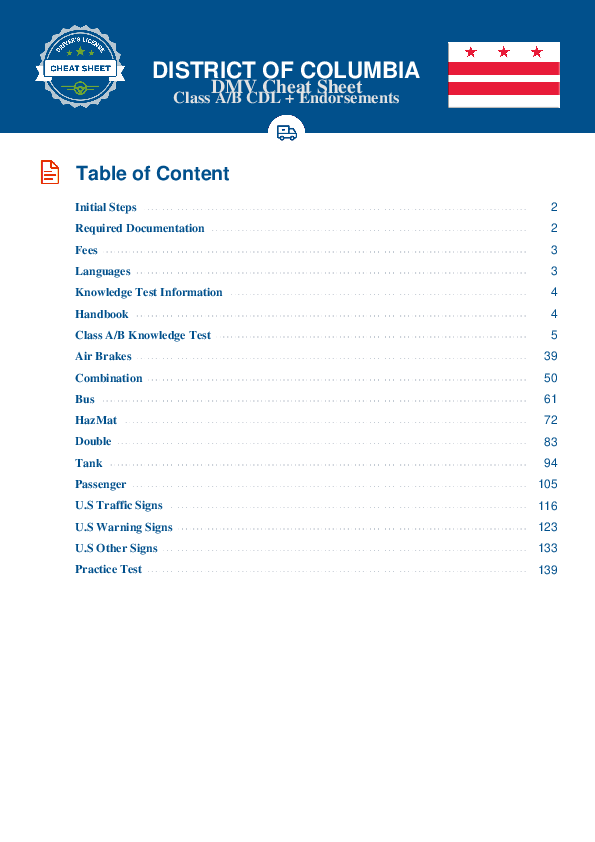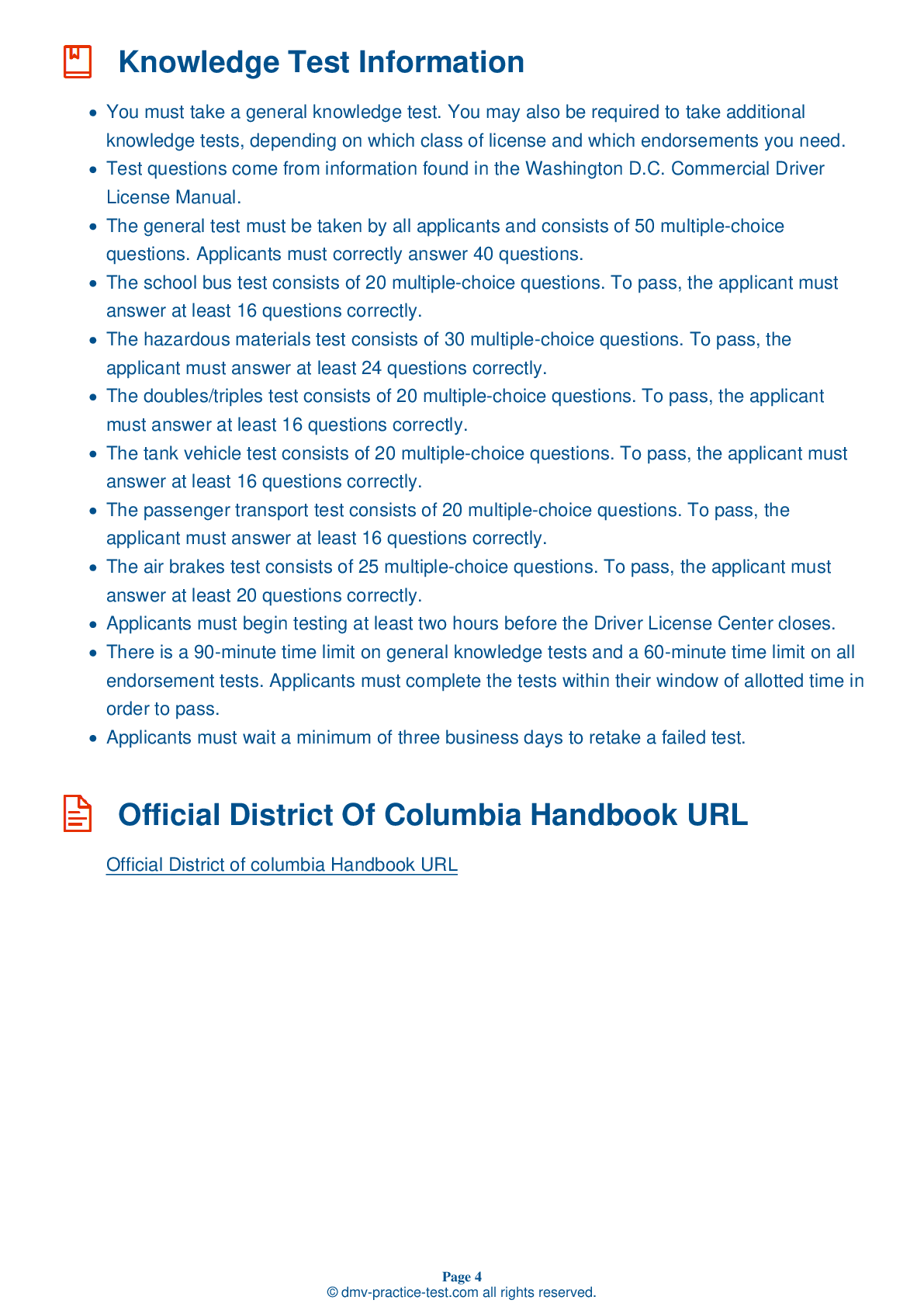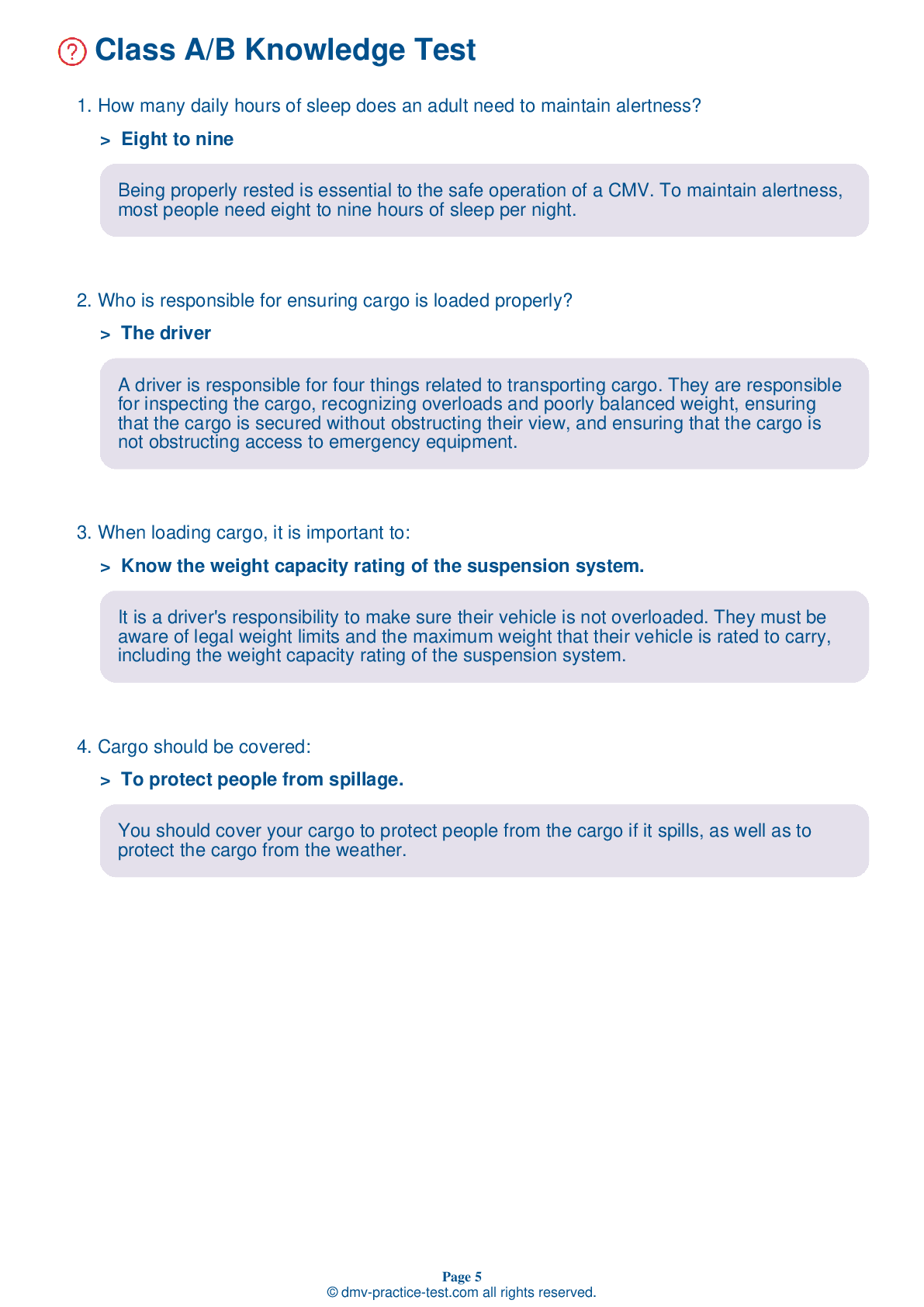Tank #1
Tank Endorsement Test | District Of Columbia 2025 #1 Page 2 of 3
Train for FREE with our District Of Columbia tank endorsement practice test online. The official exam test consists of several obligatory parts, with all of them checking your knowledge of different blocks of road rules. If you need to obtain a DC tank license in 2025, practice as much as possible. Free sample tests published on our website will help you check and improve your knowledge and boost your grades. Please bear in mind that DMV requirements for issuing a CDL tank vehicle endorsement may vary from state to state.
20
16
20
8 . Load hazardous materials:
In the rain.
Hazardous materials should always be loaded away from heat sources. Many materials become more hazardous if their temperatures increase.
9 . When traveling with Division 1.1, 1.2, or 1.3 explosives, a vehicle should not be:
Painted.
When carrying Division 1.1, 1.2, or 1.3 explosives, you should never park within five feet of the traveled portion of the road. Except when parking for short periods to address vehicle necessities, you should not park within 300 feet of a bridge, tunnel, or building; a place where people gather; or an open fire.
10 . When preparing to enter traffic, you should do all of the following, except:
Assume other drivers will make room for your much larger vehicle.
When crossing or entering traffic, bear in mind the size of your vehicle and the distance it will need to accelerate. Wait for a gap in traffic that is large enough to accommodate your vehicle before you begin to accelerate. Remember that you will need more room to accelerate if your vehicle is heavily loaded. Before crossing a road, be sure that you can get all the way across without interfering with traffic.
11 . If a product requires a "Poison Inhalation Hazard" placard, the placard must be used when transporting:
The product in a non-sealed container.
For applicable materials, the "Poison Inhalation Hazard" placard and the appropriate hazard class placard must always be displayed, even for small amounts of the materials.
12 . When glad hands are coupled, the seals should be pressed together at an angle of:
90 degrees.
When coupling, be sure to couple the proper glad hands. When glad hands are connected, the seals should be pressed together at a 90-degree angle.
13 . If you are transporting explosives and your vehicle breaks down, you may notify other drivers:
By keeping the driver's side door open.
If your vehicle breaks down on the road while you are transporting explosive materials, you must warn other drivers. Put out warning signals like reflective triangles or electric lights if you are carrying Division 1.1, 1.2, or 1.3 explosives. Do the same if you are driving a tank used to transport Class 3 flammable liquids or Division 2.1 flammable gases, even if the tank is empty. If transporting flammable materials, do not use warning signals that could cause your cargo to catch fire.
14 . Carrying liquids in a leaking tank:
Is acceptable if you are running behind schedule.
When inspecting any style of tank, the most important thing for a driver to check for is leaks. Transporting any type of gas or liquid in a leaking tank is illegal.
2025 District Of Columbia | Frequently Asked Questions
In the District of Columbia, a CDL Class A license allows the holder to operate any combination of vehicles with a Gross Combination Weight Rating (GCWR) of 26,001 pounds or more, provided the Gross Vehicle Weight Rating (GVWR) of the vehicle(s) being towed is over 10,000 pounds. This includes tractor-trailers, truck and trailer combinations, and flatbeds.
A Class A CDL license in the District of Columbia permits the holder to operate various types of larger, heavier commercial vehicles. This includes tractor-trailers, truck and trailer combinations, tank vehicles, livestock carriers, and flatbeds. The vehicles can have a Gross Combination Weight Rating (GCWR) of 26,001 pounds or more if the towed vehicle is over 10,000 pounds.
To obtain a Class A CDL license in the District of Columbia, you must be at least 21 years old, possess a valid non-commercial driver's license, pass a vision test, and provide proof of residency and identity. You'll also need to pass written knowledge tests, obtain a Commercial Learner's Permit (CLP), and successfully complete a skills and road test.
In the District of Columbia, you must be at least 21 years old to qualify for a Class A Commercial Driver's License (CDL). This age requirement is consistent across all states and is set by federal regulation. This allows for interstate operation of commercial vehicles. For intrastate (within the same state), the minimum age can be 18.
Specific endorsements are not required for a Class A CDL license but they can provide additional driving privileges. These include endorsements for operating vehicles like school buses, passenger vehicles, tank vehicles, and vehicles carrying hazardous materials. Each endorsement requires passing specific knowledge and skills tests.
The Class A CDL skills test in the District of Columbia consists of three parts: the vehicle inspection test, the basic control skills test, and the road test. The vehicle inspection test involves checking the vehicle's safety components, the basic control skills test assesses your ability to maneuver and control the vehicle, and the road test evaluates your on-road driving skills.
Yes, limitations can be imposed on Class A CDL license holders in the form of restrictions. These are based on the driver's abilities or the type of vehicle they tested in. For example, if a driver takes the skills test in an automatic transmission truck, they will have an 'E' restriction, limiting them to automatic transmission vehicles only.
Yes, it is possible to take the written Class A CDL test in languages other than English in the District of Columbia. However, the Federal Motor Carrier Safety Administration requires all CDL holders to read and speak English sufficiently to converse with the general public, understand highway traffic signs and signals, respond to official inquiries and make entries on reports and records.
Yes, you can request accommodations for the Class A CDL written test in the District of Columbia due to disability. The DMV is committed to providing accessible services and accommodations to individuals with disabilities. You should contact the DMV directly in advance of your test to discuss your needs and the potential accommodations available.
If you don't pass the Class A CDL written test in the District of Columbia, you are allowed to retake it. However, you must wait three days before retaking the test. If you fail the test three times, you must wait 90 days before taking it again. There's also a retesting fee that applies each time.



